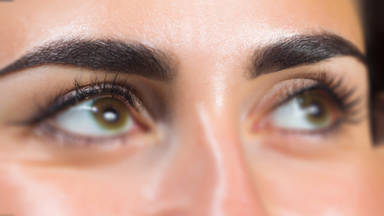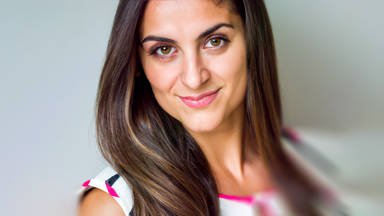
In this article, we're gonna teach you how to contour your hair. The term contouring in make-up usually refers to highlighting and shading the skin, and it is often thought that contouring is only used on skin. However, contouring can also be applied to hair. It can be used to lighten or darken it in order to give it a more vibrant or darker appearance. Because of the clever placement of colors around the face and the play of light and shadow, hair contouring can change the shape of your face by emphasizing your best features. Here is a guide to applying contouring techniques to hair in the right way.
Contouring your hair means customizing the color to compliment your facial features, skin tone, and facial structure. Colors are chosen based on your skin tone and placement is based on your face shape. In order to achieve a more defined finish, the various colors are either applied separately or freehand for more pronounced pieces.
Let's start
Start by separating the hair between your ears and form a circle, then hang a thick 1 cm bunch of hair around the circle, and wrap a piece of foil around it. When you have separated the hair, you tease it at its root.
It's best not to bleach the teased part, because in new make-up techniques, the roots of the hair are not bleached. You only need to tease the hair to fade the hair's color boundary lines, then bleach the hair after the teased part, and apply the material to the hair.
In general, you shouldn't fold the foil in the middle if you have long hair. A double fold of the foil may have been seen by some artists, but oftentimes, this will cause the foil to heat up, damaging the hair. As such, it is best not to fold the hair into a cushion shape, in order to prevent the foil from overheating. If you have long hair, simply fold it in half vertically. This will keep the hair from being damaged by heat.
Similarly, you will have to tease the next bunch of hair, and then apply the material to it. If the material is applied on the foil, it only takes one sweep to stick the material to the hair.
In this stage, beginners may encounter the problem of the foil sliding off their hair frequently. If you sweep the brush on the hair, it sticks to the foil and won't fall off.
Continue to separate hair on the sides, but not in the same way as before. Take three big sections out of a bunch of hair on the top of the head, then hang what's left downwards. To put it simply, you take 3 parts, each one with a thickness of 1 cm or more. You then start teasing the parts together. You must leave the section of hair that is hanging downwards untouched, as it will remain dark in color. repeat the process the same way you just did until all of the hair on the head has been covered. Take 3 pieces out of a bunch of hair in a zigzag pattern and hang what's left downwards to be free.
Make sure the hair bunches are straight and without unevenness. Again You separated 3 big parts and let the rest go free, and then tease each part.
To reach your desired color base, you must take the appropriate pauses during the final step. From the first to the last foil, you should examine the hair sections. The foil hair should all have the same color base.
Amateurs often make the mistake of folding all the foils at once, pausing, and then washing them all simultaneously. This is not a good Idea, since the first foil you have wrapped around the hair has stayed there for a longer period of time than your last foil. Because of this, some parts of the hair in some treatments appear too white, while some are creamy, and the others are relatively yellowish white.
It is possible to have a base number of 9 or 8 for example, and they can reach those numbers accordingly. You can give the dye time to color the hair as long as the hair is resistant to damage and burning.
The hair can be washed once the foils have been wiped and removed. In order to thoroughly remove bleaching material from your hair, you will need to use a shampoo while washing the hair. Rinse your hair with a rinse material suitable for the base color of your hair after shampooing.









